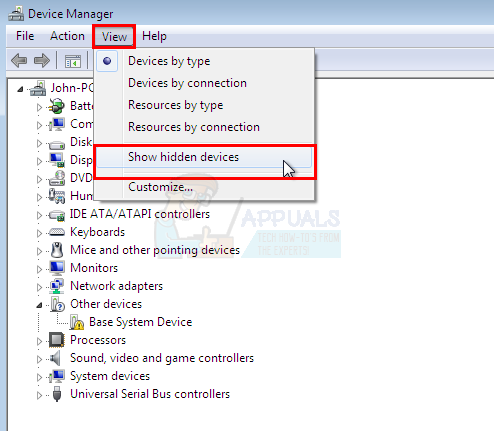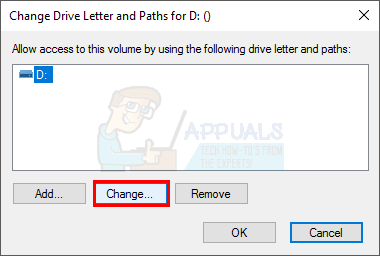There are a lot of things that can cause this issue and that is why there is a wide range of solutions available out there. It can be because of the corrupted drivers, faulty port, less power in the port and several other things causing the issue. Since there is no solid way of checking what is causing the issue, start from method 1 and keep going until the problem is solved. But first go through the troubleshooting to help you determine where the actual issue is.
Method 1: Check Device Manager for disconnected devices
For Windows 8, 8.1 and 10:
For Windows 7 and earlier versions:
Connect your external hard drive once the computer is restarted. Now check if the issue is solved or not. If that doesn’t solve the problem repeat the steps from 1-9, right click the greyed out entry and select Scan for Hardware changes.
Method 2: Connecting to the back USB PORT
If you have a Seagate external hard drive and using one of the front USB ports for the connectivity then the issue might be with the proper powering of the external hard drive. Sometimes the USB port doesn’t provide enough power. Try to connect your external hard drive to the USB port found on the back of your computer. You should try to change the port even if your external hard drive isn’t a Seagate’s drive.
Method 3: Changing the letter of the drive
Method 4: Use Diskpart to assign a letter to the drive
Now close the Diskpart and check if the computer recognizes your drive.
Method 5: Check the power source
If you are using an adapter or a hard drive enclosure and you have a 3.5 inch drive then proper power might be the issue. There are a few adapters that come with their own power supply but most of them require you to connect proper power for your drive. So if you are using an adapter or an enclosure then connect it with a power supply (or something else) to deliver the power. Your USB port might not be capable enough to deliver enough power for the drive. You can check the adapter or drive casing manufacture website to make sure if it handles the power requirements or not. Note: Some 2.5 inch drives might also require more power than usual (it depends on the drive) so if you are using a 2.5 inch hard drive with an adapter then try to connect it with a reliable power source as well.
Method 6: Repair Hard Drive with Chkdsk
In extreme cases, your external hard drive might be damaged and have bad sectors. This problem can be solved by running chkdsk repair tool. The chkdsk will check your drive for any bad sectors and will repair the disk if it finds any problem. Now the computer will check your drive for errors and try to repair them if it finds any. This process can take a long time so wait patiently even if there’s no progress for the first few minutes.
Method 7: Enable the external drive
In rare cases, your external hard drive might automatically be disabled. If your drive is disabled then enabling it usually solves the problem. Now check the Disk Drives (by double clicking Disk Drive) in the Device Manager and make sure that the drive is enabled as well. If it isn’t, meaning it has the same mark as that of the USB Mass Storage, then right click and select Enable. Now check if the problem is solved or not.
How to Fix Format Disk Error External Hard DriveFix: Cant Eject External Hard Drive on Windows 10Fix: External Hard drive not showing up Windows 10[FIX] Applications Freeze When External Hard Drive is Connected





